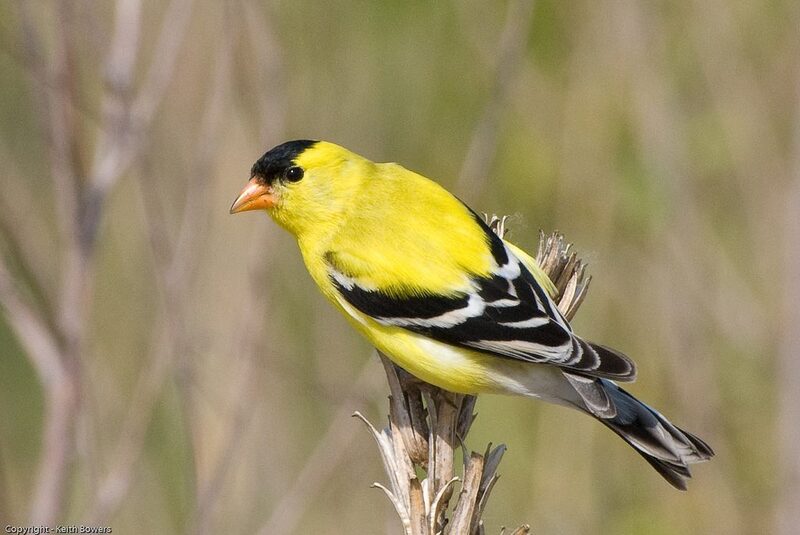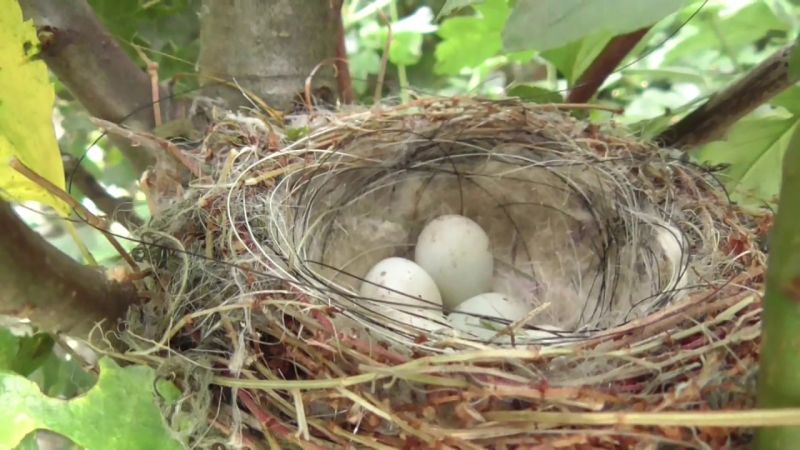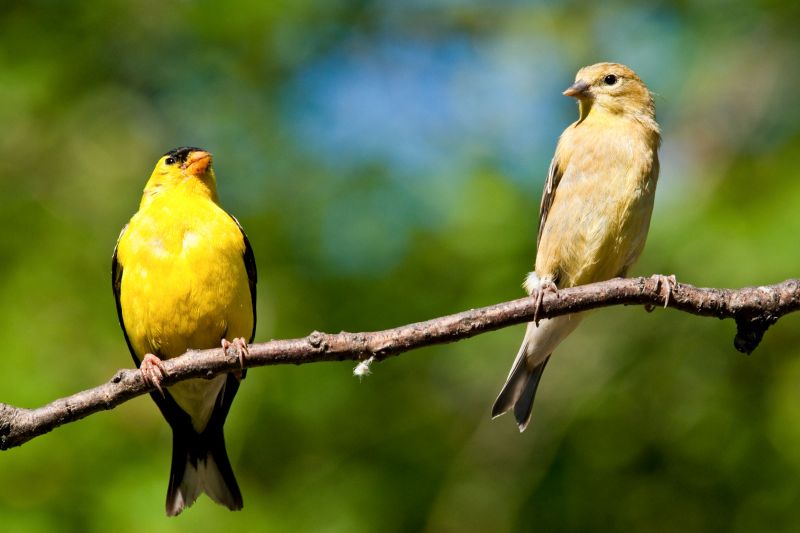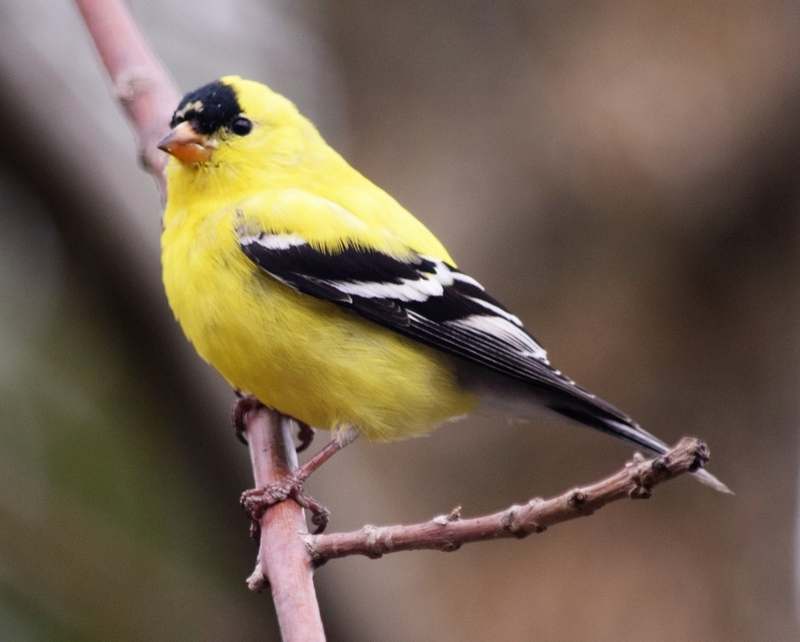American goldfinches are undoubtedly some of the most common birds you’re likely to spot all over the United States. These beautiful songbirds are members of the finch family, and they’re unique in many ways. These birds usually breed across Canada’s northern and southern parts of before they migrate south to the United States. It’s during this period that you’re likely to spot them in your garden or backyard. You might even spot a goldfinch nest.
The male goldfinches usually have a very bright yellow color for their feathers more than the females. However, you’ll notice that these colors become paler as winter approaches.
The American goldfinch undergoes a very important change in plumage as the seasons go from winter to spring. It is after this plumage that the mating and nesting habits of these birds begin.
It’s important to note that the nesting season of the American goldfinches usually begins in late June or early July after the other songbirds are done with their breeding season. This isn’t the only thing unique about the nesting habits of these beautiful songbirds.
Here is a detailed breakdown of everything you need to know about the nesting habits of the American goldfinch.

Nesting habits
You might notice that the American goldfinches disappear from your birdfeeders during early summer. This is because it is around this time that they go off to start raising families. As mentioned earlier, these songbirds tend to wait until early July to begin their nesting season.
This is because the blooming period of the thistles plays a major role in the nesting habits of the American goldfinches. These birds usually use thistle and milkweed seeds to build their nests. Since both plants tend to bloom in July, it only makes sense that the American goldfinches have to wait until then.
It’s important to note that the American goldfinch prefers a habitat in the open and covered with a few shrubs and trees to build their nests. These habitats could include orchards, farms, gardens, roadsides, and suburbs.
Both the male and female American goldfinch fly together in search of a suitable location to build their nest. Once the location is established, the female takes the responsibility of building the nest.
The construction of the nest happens in three stages. The first stage involves creating a foundation using twigs that are connected to each other by spider silk, forming an open cup. In the second stage, a much tighter cup of plant debris and roots is created. In the third stage, a softer material is used to line the nest for the sake of the eggs.
During this time, the male will guard the territory while singing and calling to his mates. If there is any impending danger, the male or the female will call on to the other using a distinct sound like ‘po-ta-to-chip’.
American goldfinches usually use materials such as catkins, weeds, vines, grass, and dead trees to create the outer layer of the nest. The inner layer of the goldfinch nest is made from milkweed, thistle, and cattails.
The whole process of building the nests usually takes about 10 to 40 minutes, depending on whether the materials are readily available or not. At times, it can take hours or even days to complete the goldfinch nest when neither the male nor the female can find any additional materials.
It is important to note that this scarcity of building materials will prompt the female American goldfinch to dismantle the nests of other birds and use the materials for her own nest.
An interesting fact about the goldfinch nest is that it is usually woven so tightly that it can hold water. Their nests are also located about 30 feet above the ground.
Once the building of the nest is completed, both the male and female American goldfinch might leave the location. This is meant to throw off their predators and make them think that they have abandoned the nest.
After a few days, both birds return, and the female starts laying eggs. This usually happens about two weeks after the nest has been completed. The female American goldfinch lays about 3 to 7 eggs and incubates them for 12 to 14 days.
During this period, when the female incubates the eggs, the male takes the responsibility of bringing food to the female while she remains in the nest. In some cases, the female might begin to build a second nest while the male feeds the fledglings.
It might interest you to know that American goldfinches will not use artificial nest boxes of any kind. However, they can end up using some cotton batting if available as nesting material.

Do American goldfinches reuse the nest?
This occurrence is very rare among these songbirds, although not impossible. American goldfinches might reuse the nest to raise a second brood in the same season. Also, other birds get to use the goldfinch-nest if the birds abandon it.
Even though the American goldfinches do not reuse their nests from season to season, they can always return to the same territory to build a new one.

Courtship and mating habits of the American goldfinches
Before the goldfinch nest is constructed, the mating habits among the American goldfinches begin. They’re usually characterized by a group of many males chasing after a single female.
This chase can go on for about 20 minutes, after which the female will choose the male they prefer as their mate. If you’re a birdwatcher, it is very easy to tell apart paired birds from the rest. This is because the paired birds usually fly very high and in circles.
The male American goldfinch can be spotted holding his tail open while fluttering the wings during these flights. He likes to sing while perched on high grounds about 15-20 feet.
When searching for a location to build their nests, several pairs might claim the same territory. If this happens, different pairs will build their nests apart from each other and vigorously defend them. The male American goldfinches will defend against other males while the females will defend the nest from attacks by other females.

Feeding habits among American goldfinches
American goldfinches are widely renowned as granivores, meaning that they mainly feed on seeds from plants. As a result, these songbirds find themselves having a constant supply of food throughout the year.
Some of their favorite seed include nyjer, ragweeds, sunflowers, evening primroses, cosmos, mulleins, grey birches, alders, dandelions, and goatsbeard. However, American goldfinches also feed on small insects at times as a source of protein. These insects include caterpillars, berries, plant lice, among others.
American goldfinches tend to eat while upside down from seedbeds, something that is both unique and uncommon among other species of finches. Some of these songbirds use their feet when eating, while others mainly use their bills.
The young American goldfinches mainly feed on seeds. Their parents feed them by regurgitating some of the undigested seeds part by part. This method enables the parents to feed each of the fledglings every time they visit the nest.

How to attract American goldfinches to your garden
As mentioned earlier, American goldfinches are very common in the United States, and attracting them to your backyard or garden isn’t so hard either. If you’re a birdkeeper, all you’ll need to attract them is food and a birdfeeder.
These songbirds love thistle seeds, also known as nyjer seeds, and it’s actually their favorite food. If you’re looking to attract these birds into your garden, ensure that you fill your birdfeeders with the seeds and hang them on a tree.
This will definitely have these birds flying into your compound more than you’ve seen before. However, you can still add a yellow ribbon on the birdfeeders, and it will attract the birds even more.
If you want to keep American goldfinches visiting your backyard season after season, you might want to plant some of their favorite seeds in thistles, sunflowers, cosmos, among many others. It’s important to note that you can place birdbaths in your compound, and these birds will keep streaming in.
Conclusion
American goldfinches are among the most beautiful and fascinating birds you’ll find all over the United States. If you’re a true birdwatcher, you’d want to make it a priority to attract these songbirds into your garden every now and then.
This is because you won’t need to worry about them breaking your birdseed budget or dragging with them some dangerous insects or small animals. They are bound to make your backyard colorful and also fill your compound with beautiful sounds.
Related
- The American goldfinch is one of the many finches you can find in the states. You can find plenty more finches In Florida (6 Species Pictured). Check them out!
- Ever wondered if there are birds that mate for life, just like a lot of us humans do? The answer might be surprising. Check it out in: What Birds Mate For Life?
Leave a Reply